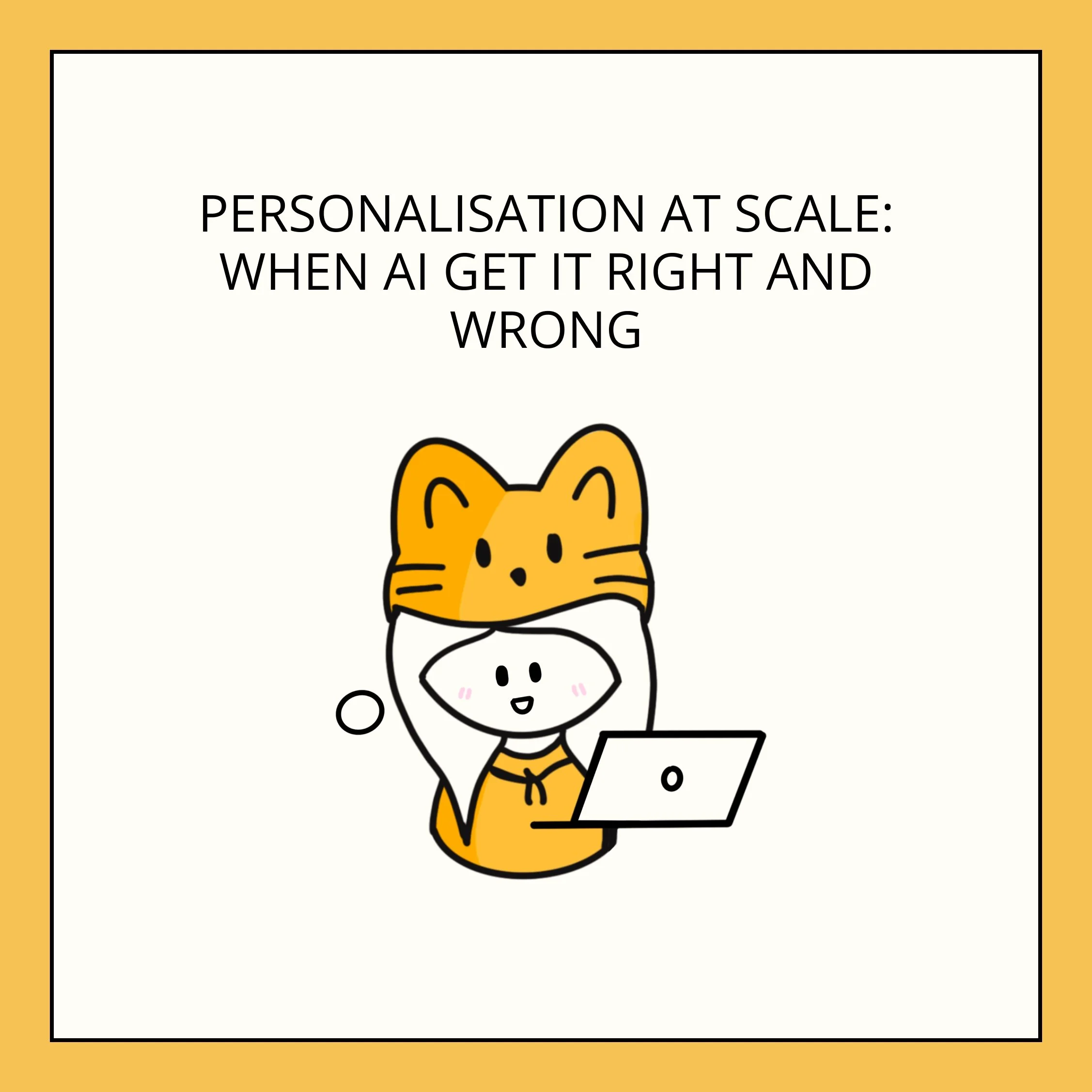Personalisation at Scale – When AI Gets It Right and Wrong
Personalisation has become a cornerstone of modern marketing. AI enables marketers to deliver highly tailored experiences by analysing vast amounts of consumer data. You have probably noticed this yourself: scrolling through social media, your feed is filled with content, ads, and recommendations that feel curated just for you. When done well, this increases engagement, satisfaction, and loyalty — turning casual users into devoted customers.
But personalisation comes with its challenges. Striking the right balance between helpful and invasive is critical.
Striking the Balance: Helpful vs. Invasive
While personalised content enhances the user experience, over-targeting can feel intrusive and raise privacy concerns. Marketers must approach AI personalisation thoughtfully:
Be Transparent: Clearly inform users about how their data is collected and used. Many countries have data protection laws, so marketers must stay compliant.
Offer Control: Allow users to manage their preferences and opt out as needed.
Maintain Relevance: Personalisation must align with user interests. Irrelevant or overly targeted content can come across as spammy and alienate the audience.
Finding this balance ensures that AI-driven campaigns feel helpful rather than creepy.
The Future of AI in Personalisation
The role of AI in personalisation is only set to grow. Key trends to watch include:
Predictive Analytics: AI can anticipate customer needs before they arise, enabling proactive engagement.
Ethical AI: As privacy concerns grow, developing AI systems that prioritise transparency, consent, and ethical use of data will be essential.
AI can dramatically enhance marketing campaigns, but human oversight remains critical. The most innovative campaigns combine the scale and precision of AI with ethical considerations, creativity, and empathy.
x, Esther



